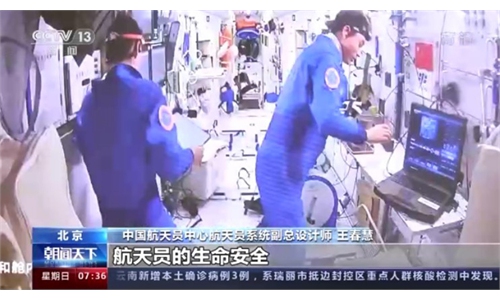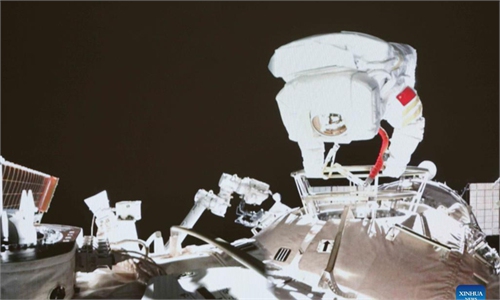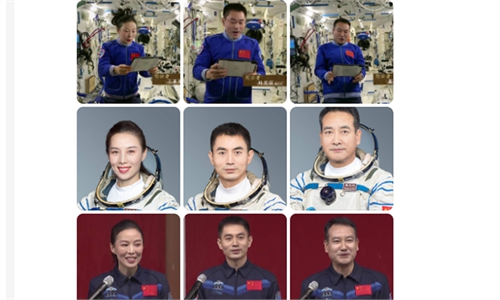Shenzhou-13 taikonauts deliver first Tiangong class
Drive for space curiosity, national pride: HK students
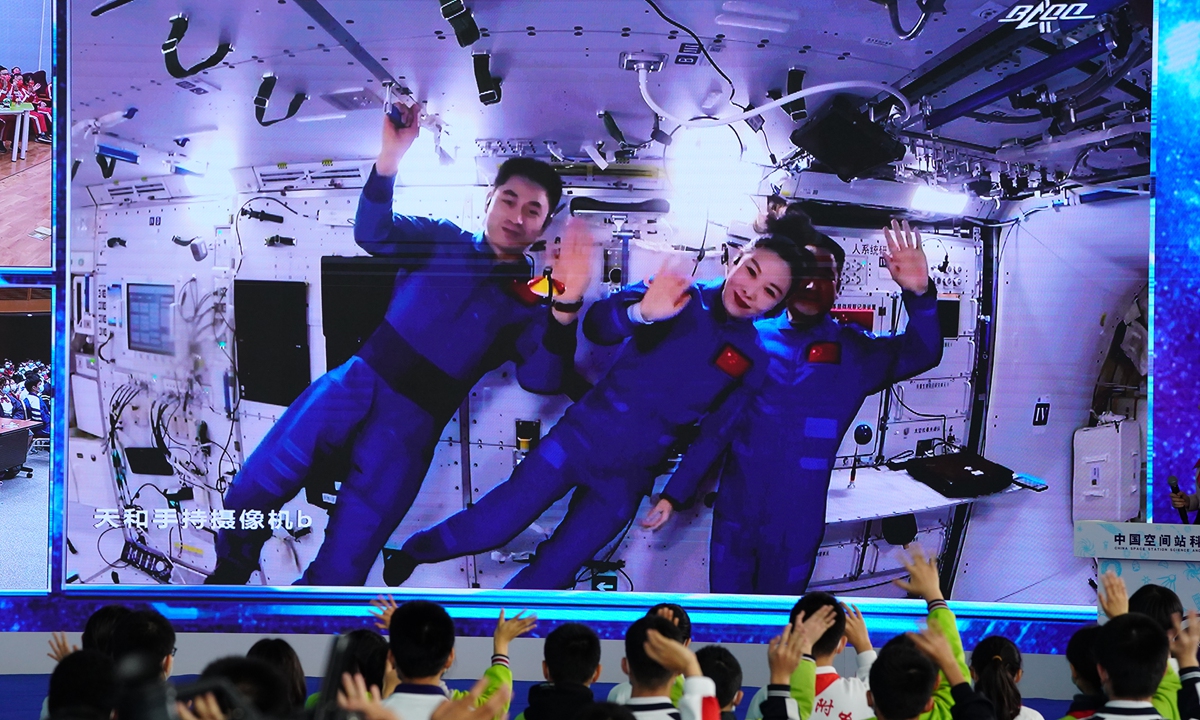
Photo: Fan Wei/GT
Three taikonauts of the Shenzhou-13 spaceflight mission delivered the first session of the Tiangong class series, China's first extraterrestrial lecture series, to popularize space science. The lectures, mainly aimed at young students from all over the world, began with a live broadcast from the orbiting China Space Station on Thursday afternoon.
A total of 1,420 students from primary classrooms at the China Science and Technology Museum in Beijing, as well as other classrooms in Nanning, South China's Guangxi Zhuang Autonomous Region, Wenchuan county, Southwest China's Sichuan Province, and the Hong Kong and Macao special administrative regions, took part in video communication with the Shenzhou-13 crew, according to a statement the China Manned Space Agency (CMSA) provided to the Global Times.
According to the CMSA, it will become routine for Chinese manned space missions to conduct such space lectures. Taikonauts will carry out such missions on a regular basis from the China Space Station.
Yalie Wang, a third-year student in the middle school of Pui Kiu College, where the Hong Kong classroom was assembled, said that it is a rare and precious opportunity to communicate with taikonauts in space, which is not even possible in many other countries.
Wang said she was most impressed by the buoyancy experiment Wang Yaping conducted. "The ping pong ball wouldn't float up in the water while in space, this directly showed me how different it is from Earth," she said.
Wong Wai-shing, a deputy principal of Pui Kiu College, told the Global Times that the class was an opportunity for students to see how different space is from Earth, as some of the scientific experiments conducted by the taikonauts turned out to have results that could never be easily observed on Earth.
This has aroused students' interest in science, Wong said. He noted that talking with Chinese taikonauts also boosted students' national pride as they witnessed how fast China's aerospace industry had developed.
Wong noted that previously, there were no courses in Hong Kong primary and middle schools related to aerospace. But in recent years, reports on the Shenzhou spacecraft and Chang'e lunar probe missions have enhanced students' knowledge of the industry, and Pui Kiu College started to provide related courses to students this year.
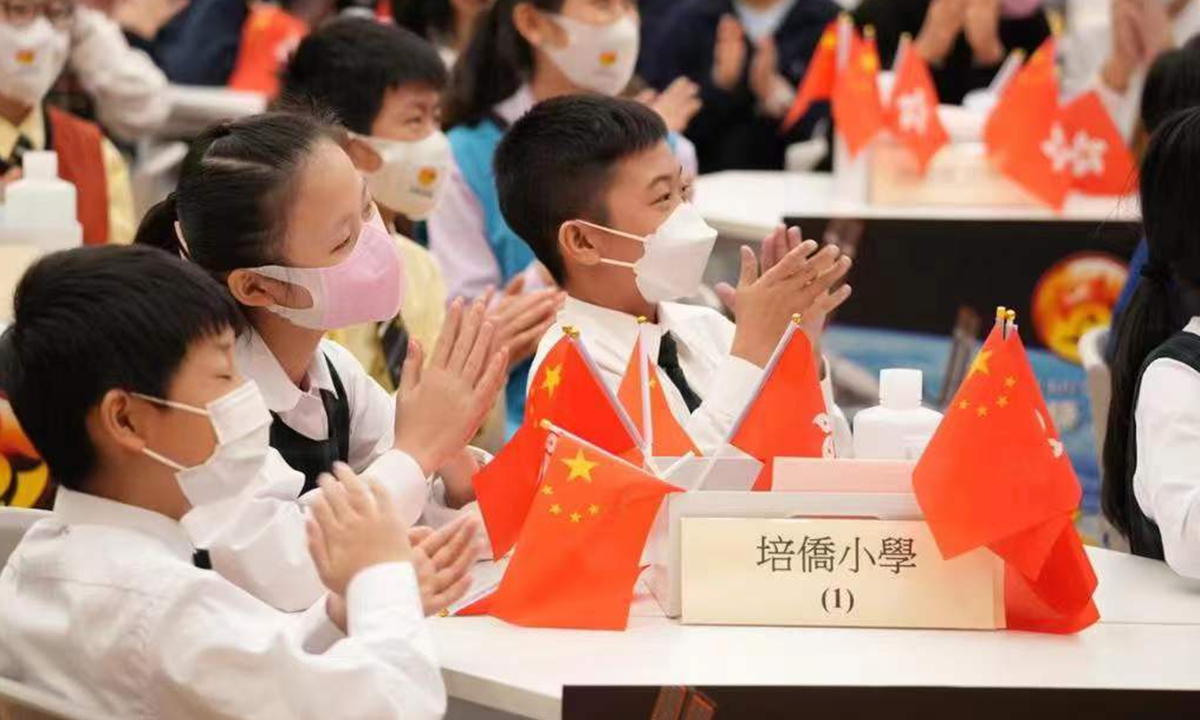
Photo: Courtesy of Pui Kiu College
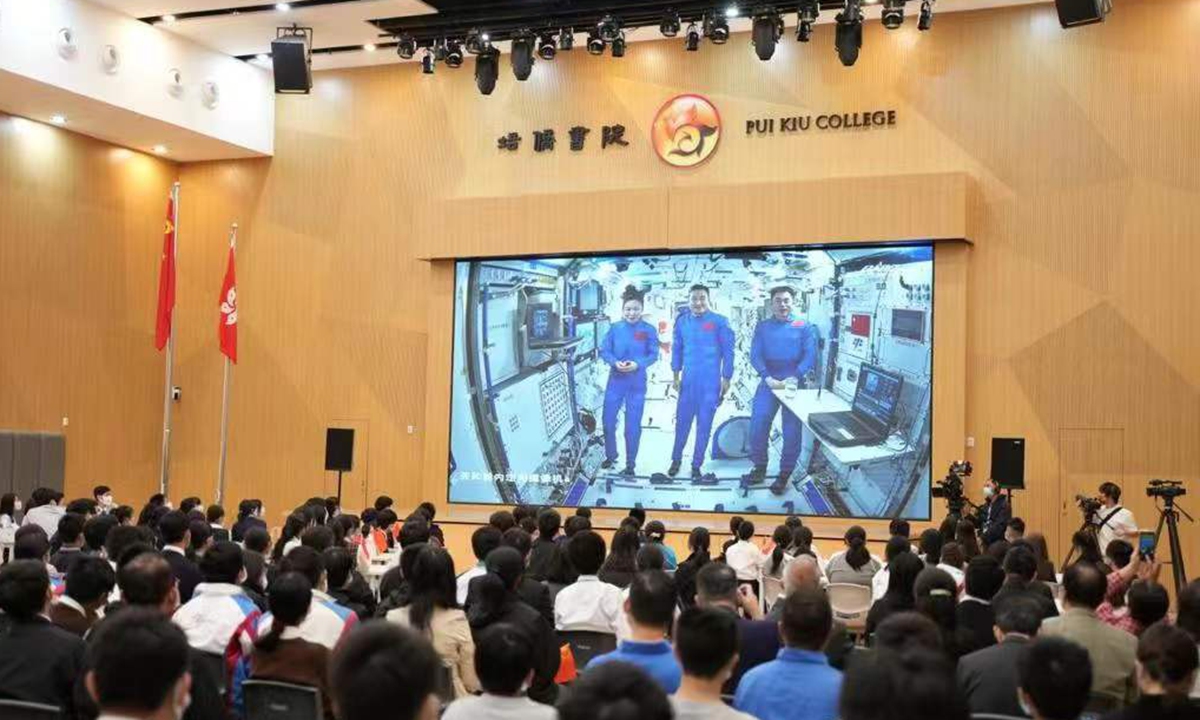
Photo: Courtesy of Pui Kiu College
During the nearly one hour class, Shenzhou-13 crew member Ye Guangfu showed the students how he turned around his body in space. It is impossible for taikonauts to walk in space like they normally do on Earth.Ye's fellow taikonaut Wang Yaping conducted some tests on the surface tension of liquid. She made a small water film and put a folded paper flower she made with her daughter while on Earth on the film, after which the pink flower unfolded and blossomed.
"I thought of my daughter when seeing the flower. Students, all of you are flowers of the motherland, I hope your dreams can blossom like flowers in the vast universe," Wang said.
Shenzhou-13 mission commander Zhai Zhigang played a cameraman's role inside the Tianhe core module during most of the process.
Netizens with sharp eyes noted that Wang's daughter also attended the class at the Beijing main venue in the China Media Group livestreaming screen, which marked one of the most moving moments of the lecture.
Students expressed their curiosity and asked the taikonauts questions about how it is to live in space. "How do you sleep in the space station? Have you seen UFOs and stars twinkling? How does it feel to sit in the rockets to fly into space …"
There was no official data on exactly how many people watched the space lecture as of press time.
Yet one Beijing mother going by the name of Wenjing told the Global Times on Thursday that it was like a Spring Festival Gala for young students in Beijing, indicating a wide coverage in the Chinese capital's schools.
What lies behind the successful delivery of the space lecture was the robust development of China's space communication technology, insiders said.
Making sure the communication links between the space station and the ground stay unobstructed during the connection so that the video does not freeze and the pictures are clear was one of the biggest challenges. To deal with this, China's Tianlian relay satellites, the space station and the ground control stations worked effectively together.
Shan Changsheng, chief engineer with the Beijing Space Information Transmission Center, told the Global Times on Thursday that the Tianlian-1 04 and Tianlian-2 -1 satellites - members of the new generation of the relay satellite family - have greatly increased their transmission speed, making the speech clearer and pictures smoother.
The Global Times learned from the Xi'an Satellite Control Center that the ground control station in Kashi, Northwest China's Xinjiang Uygur Autonomous Region sustained smooth communication with the Tianlian relay satellites for nearly one hour, covering the whole space lecture period.
The Thursday space lecture naturally reminded many that eight years ago, Wang Yaping beamed down the country's first space lecture live from space to more than 60 million middle school and primary school students across China when she was aboard the nation's Tiangong-1 space lab module. This lasted for around 40 minutes and was the second space lecture of mankind following the first by NASA astronaut Barbara Radding Morgan in 2007 from the International Space Station.
Compared with eight years ago, the Tianhe space station core module is much larger than the experimental space lab Tiangong-1, and way more advanced, Pang Zhihao, a Beijing-based space expert, told the Global Times. The quality of space-ground interaction and communication is also much improved with the help of the Tianlian relay satellites, Pang said.
Pang believed that China's space education would become better when the construction of the China Space Station finishes next year, inspiring younger generations' curiosity and love of space science.

